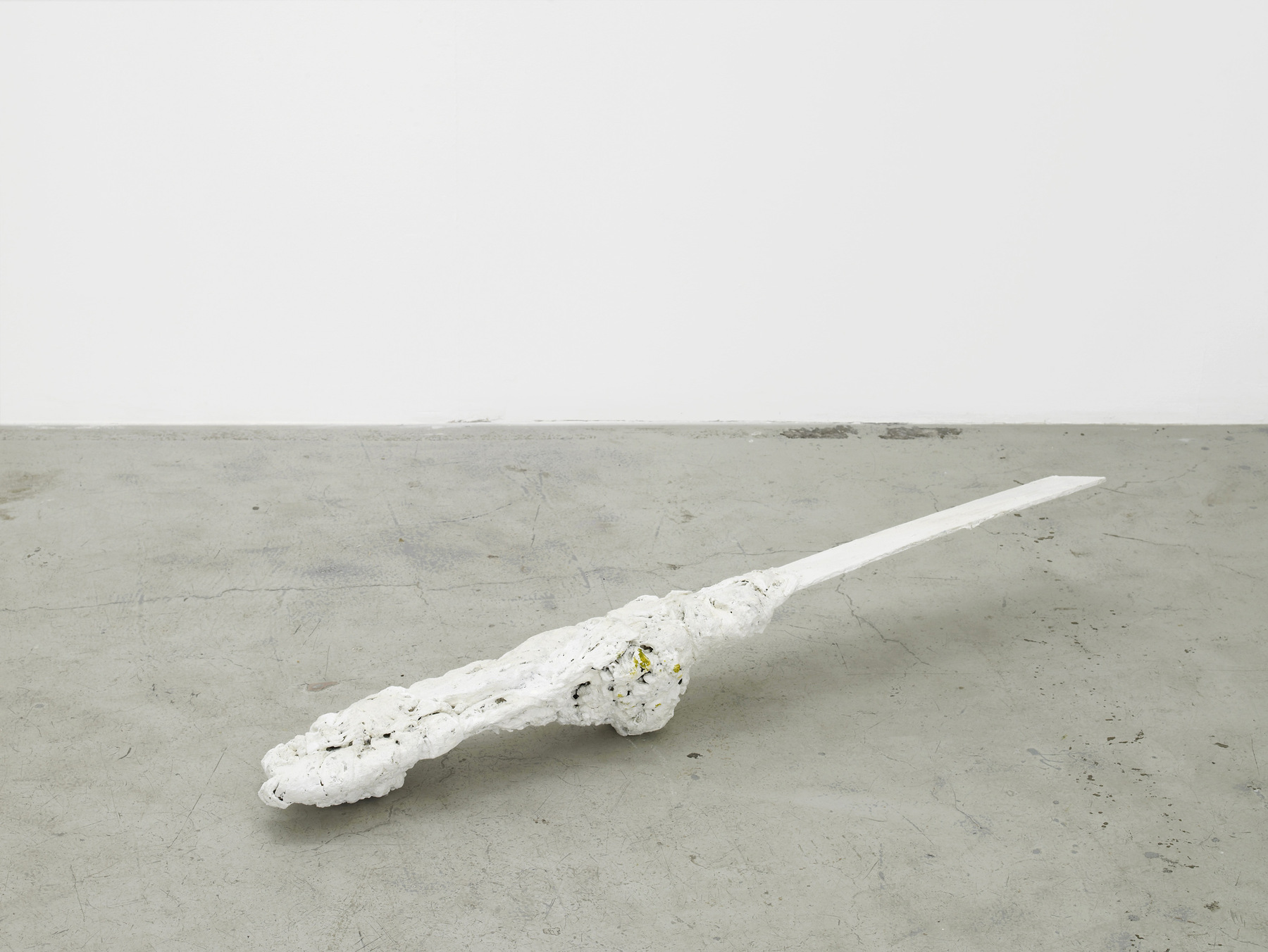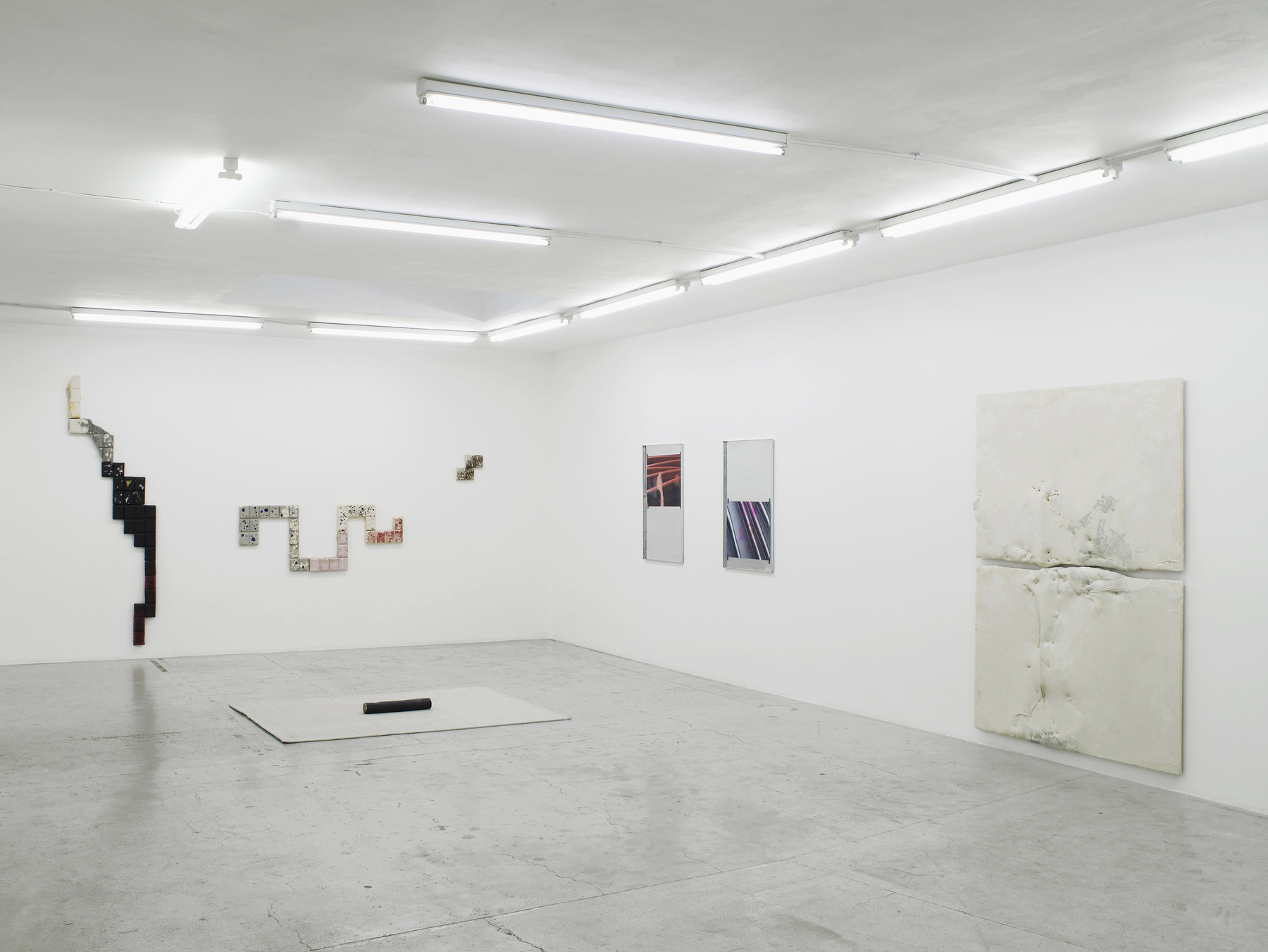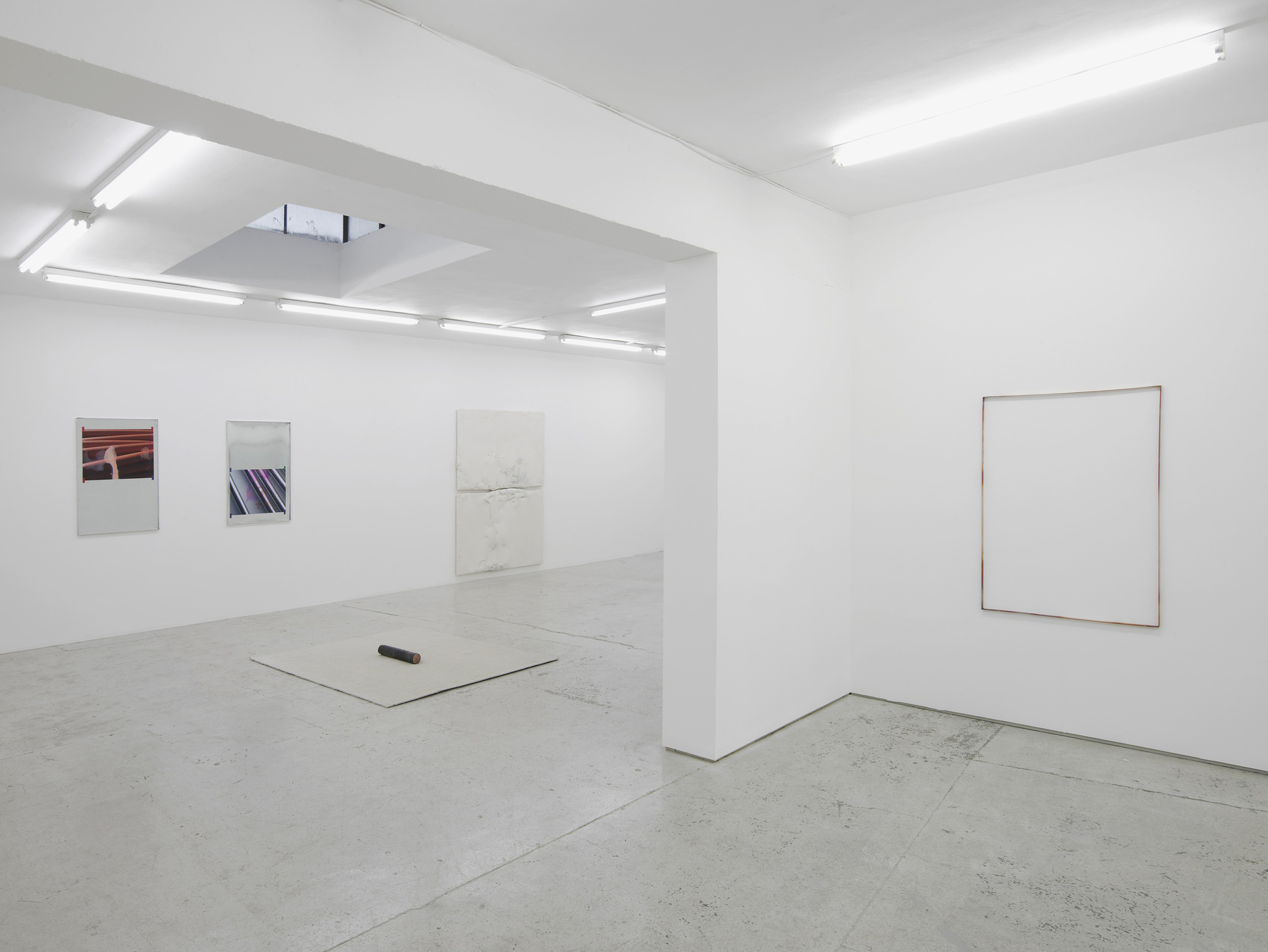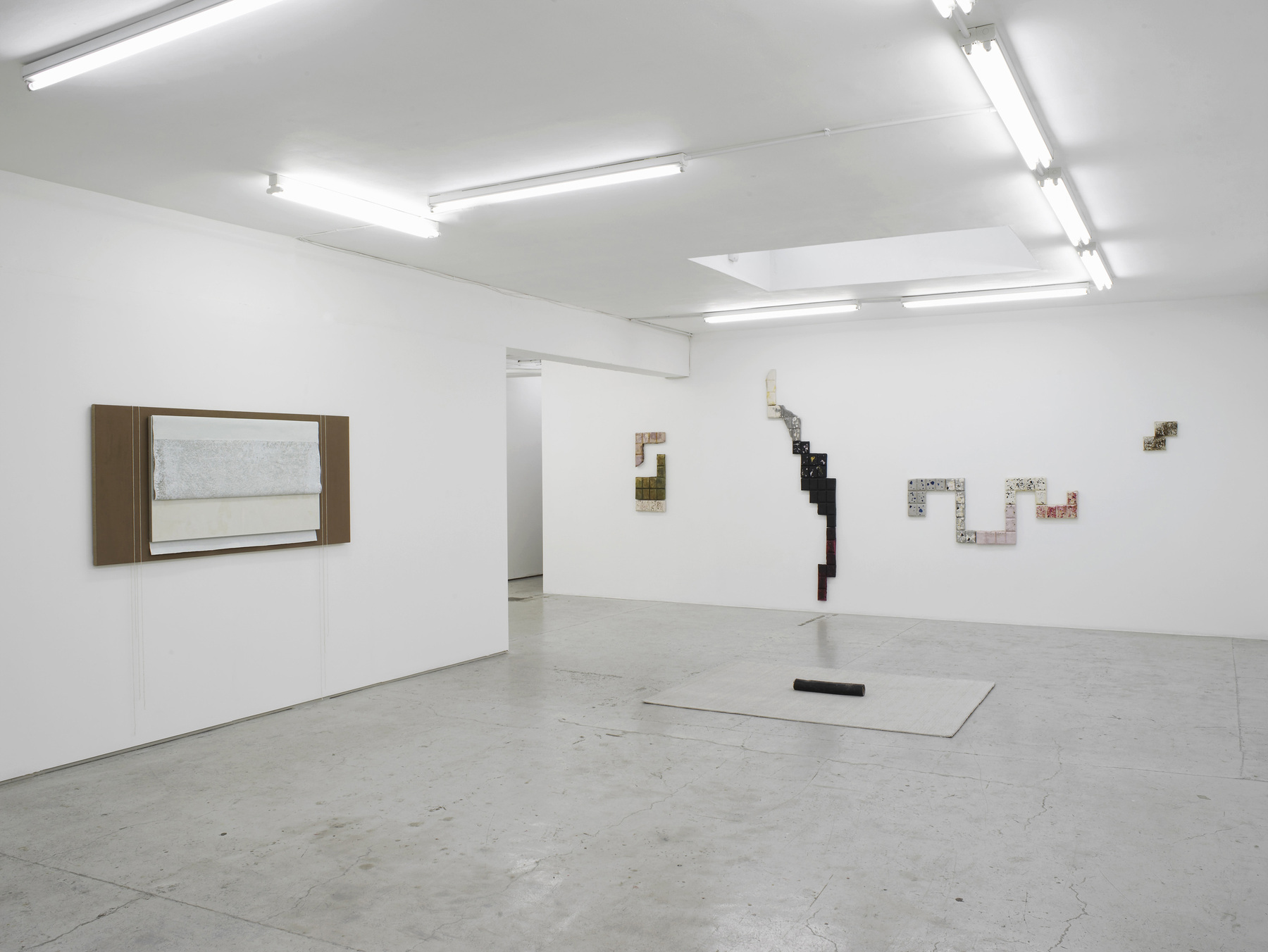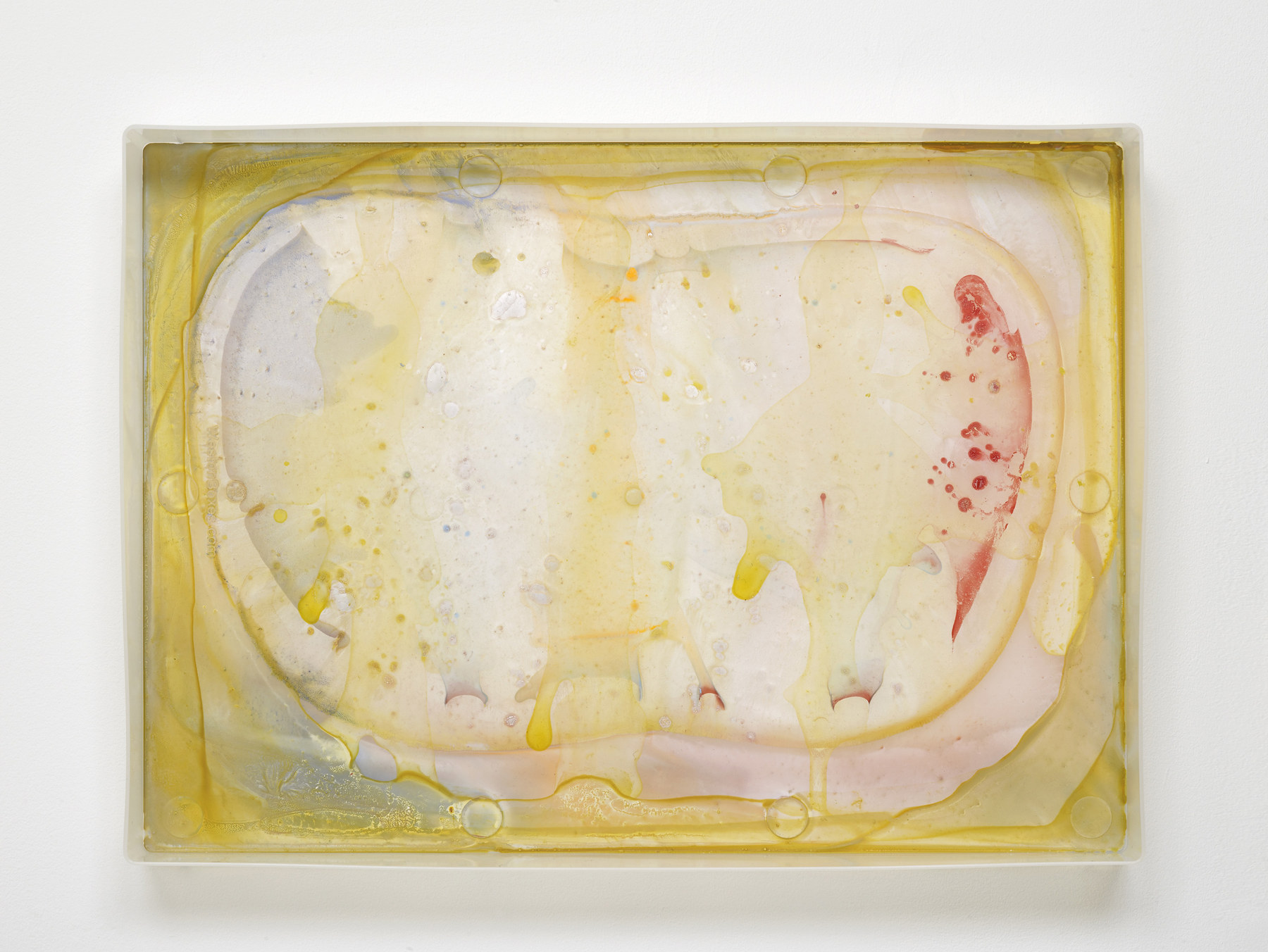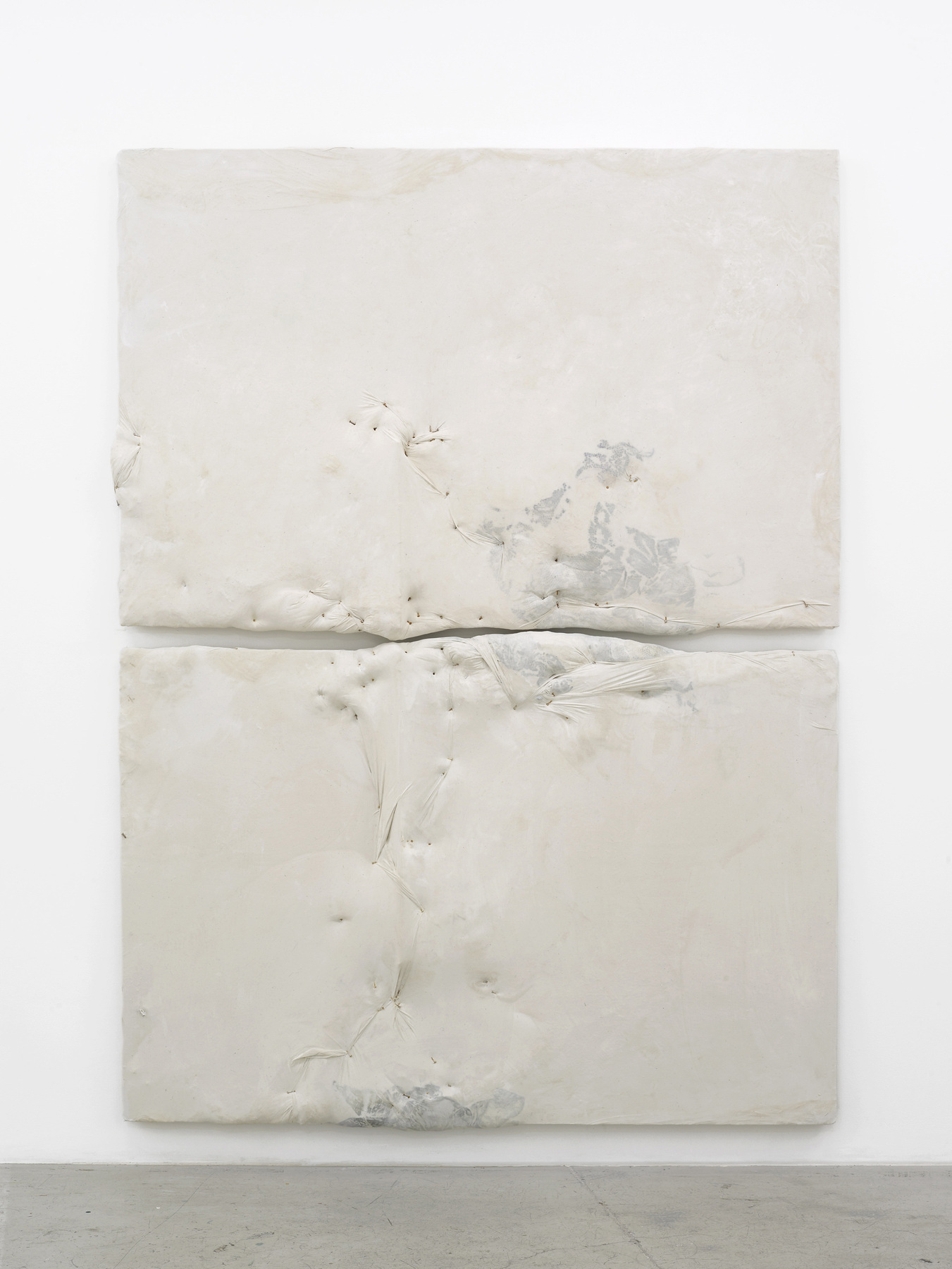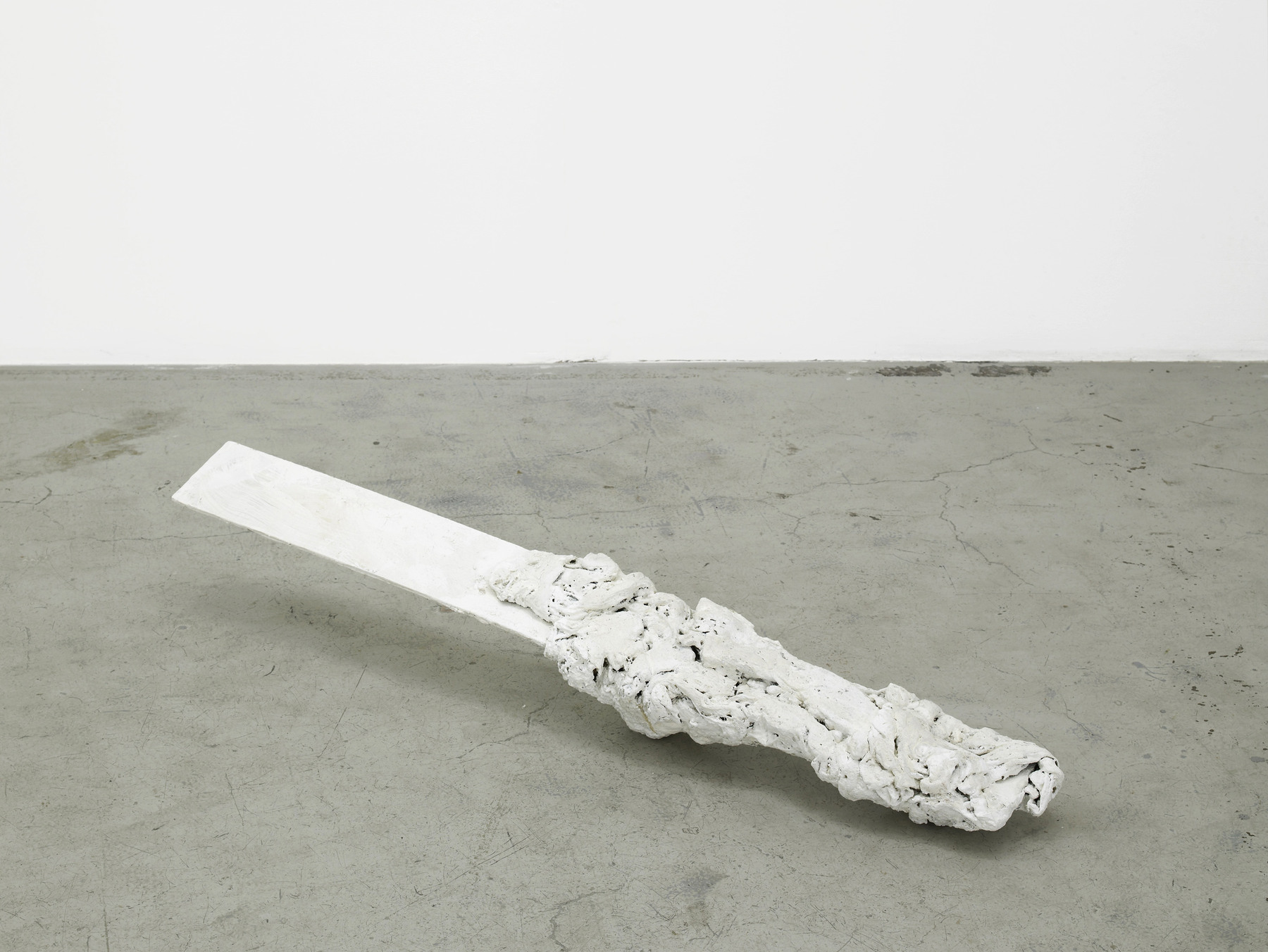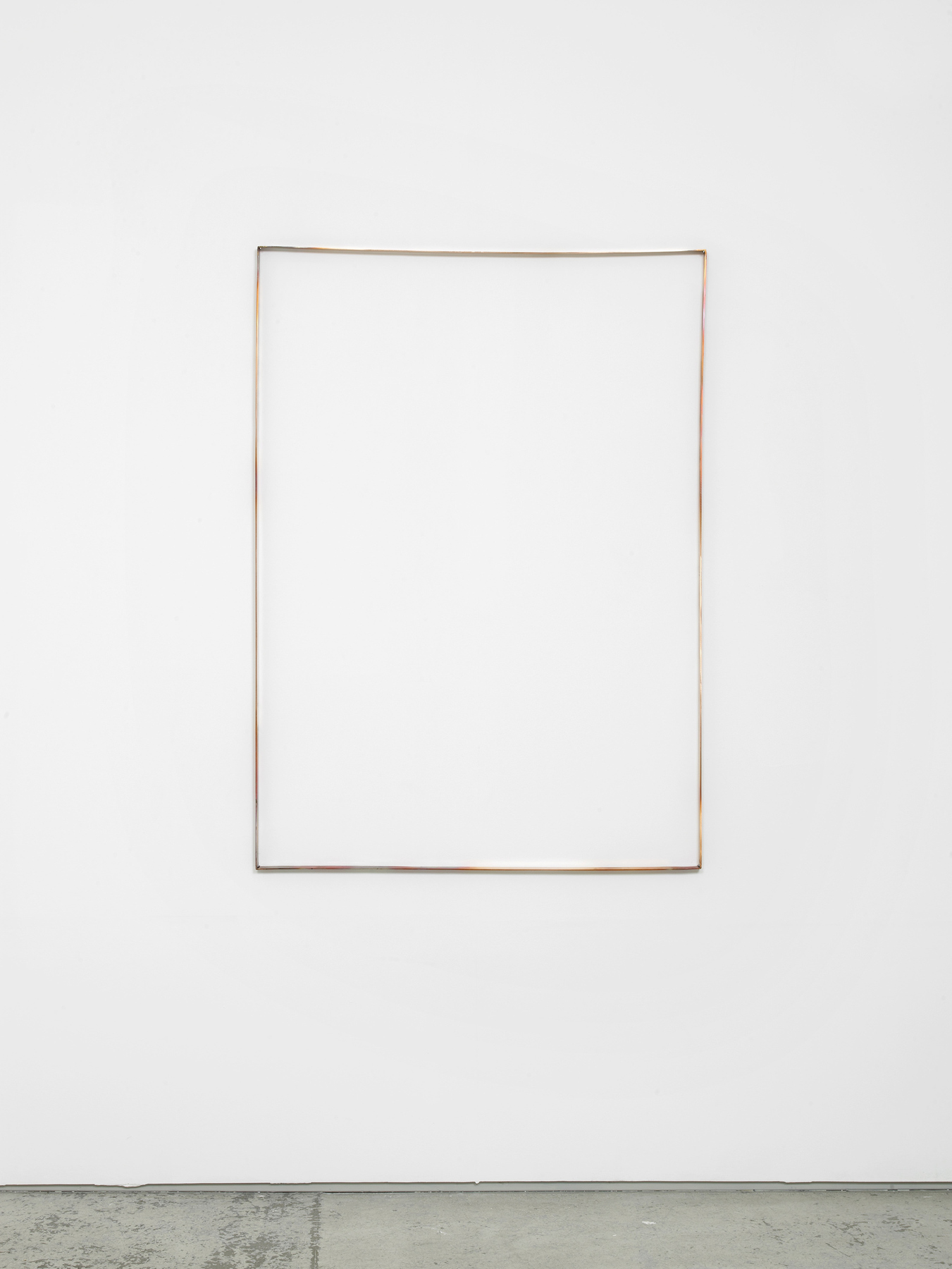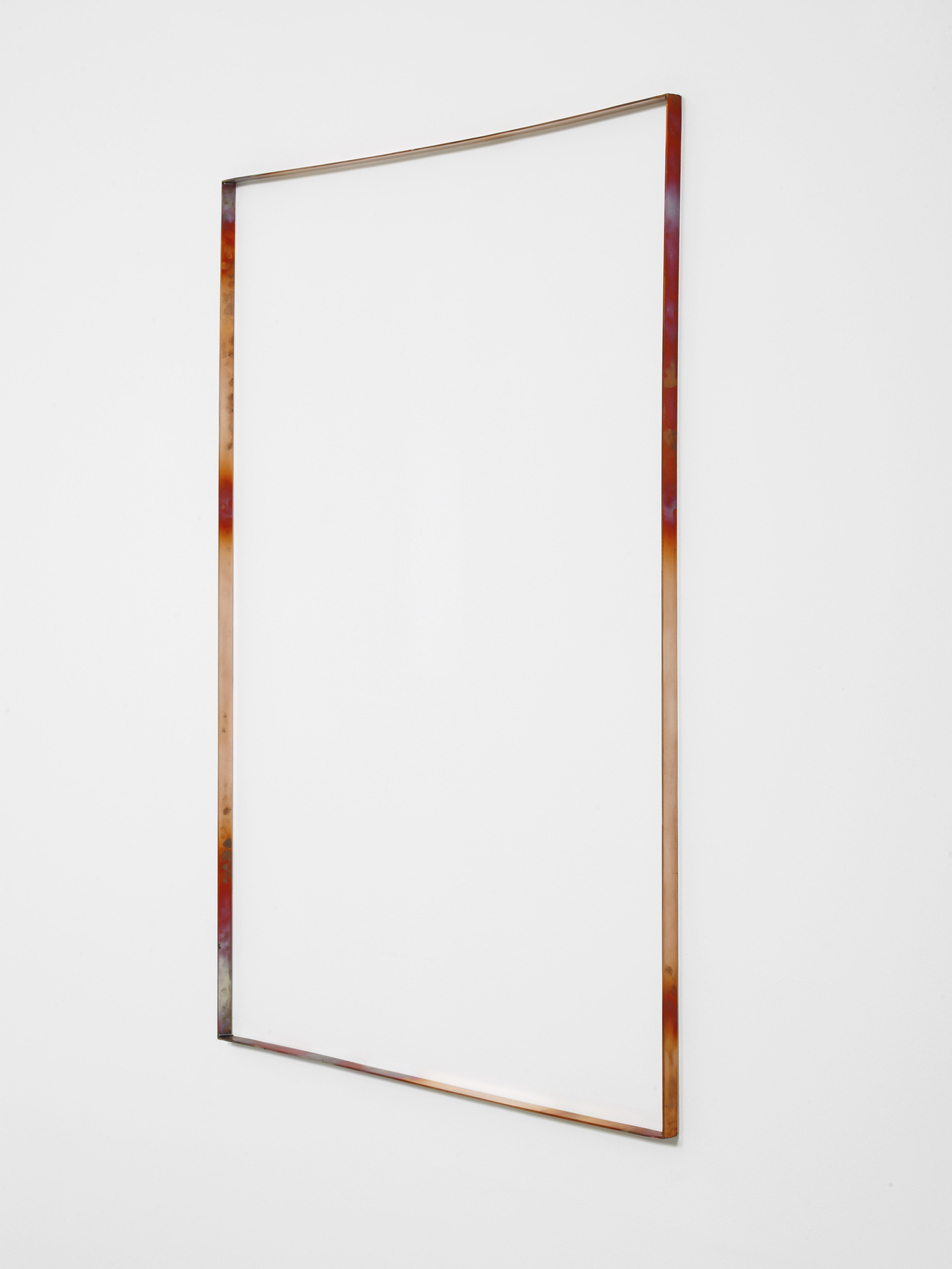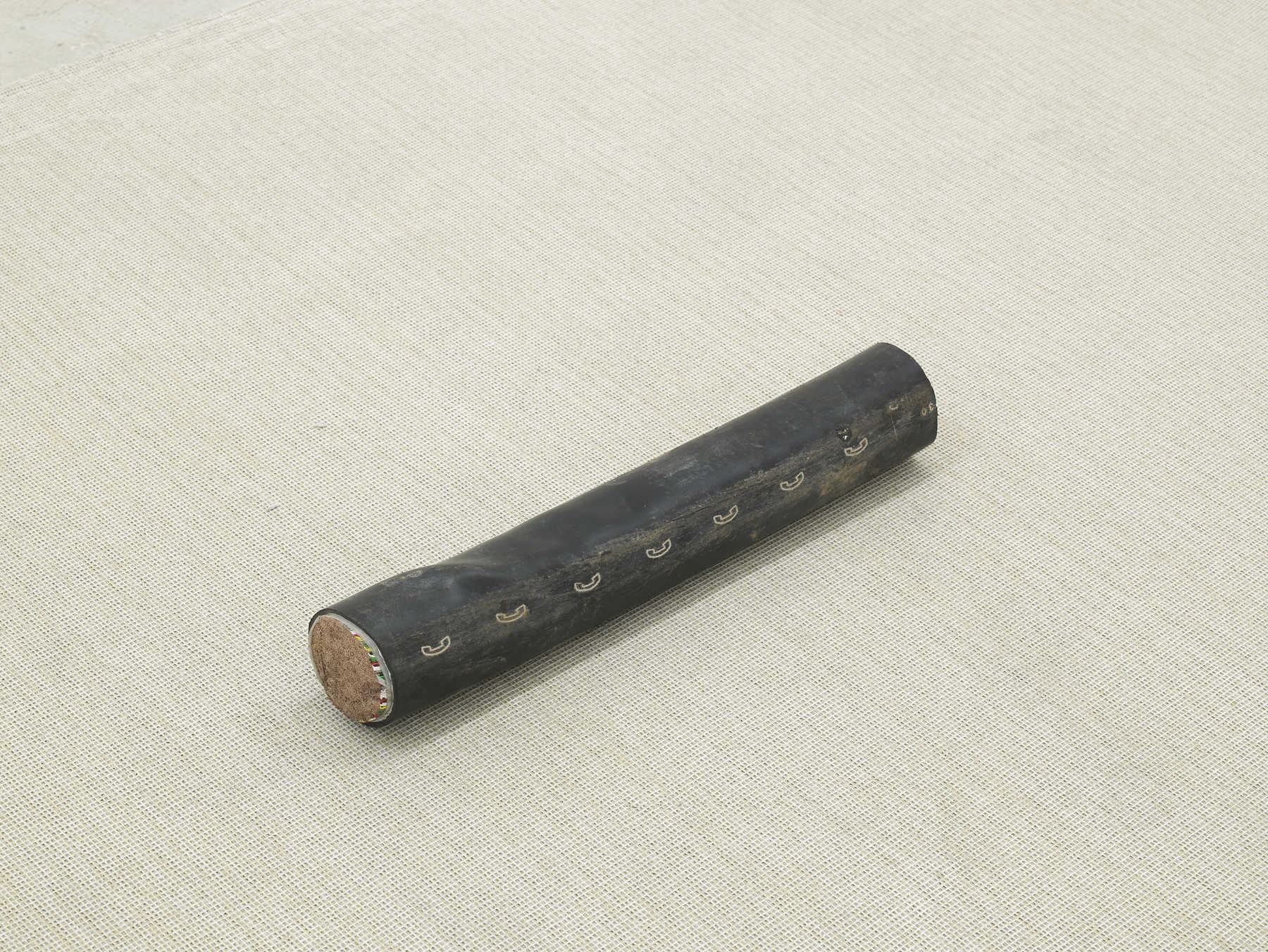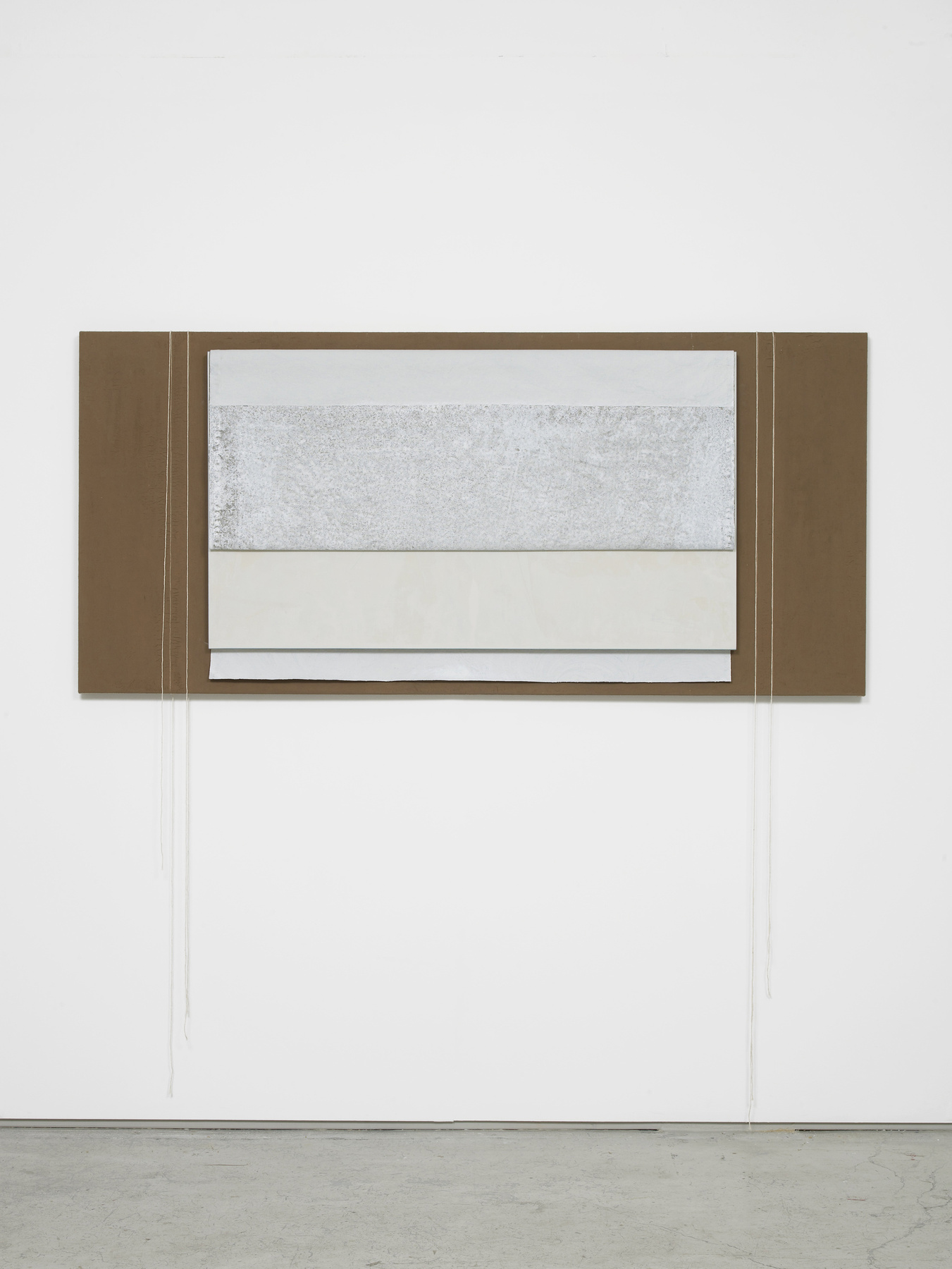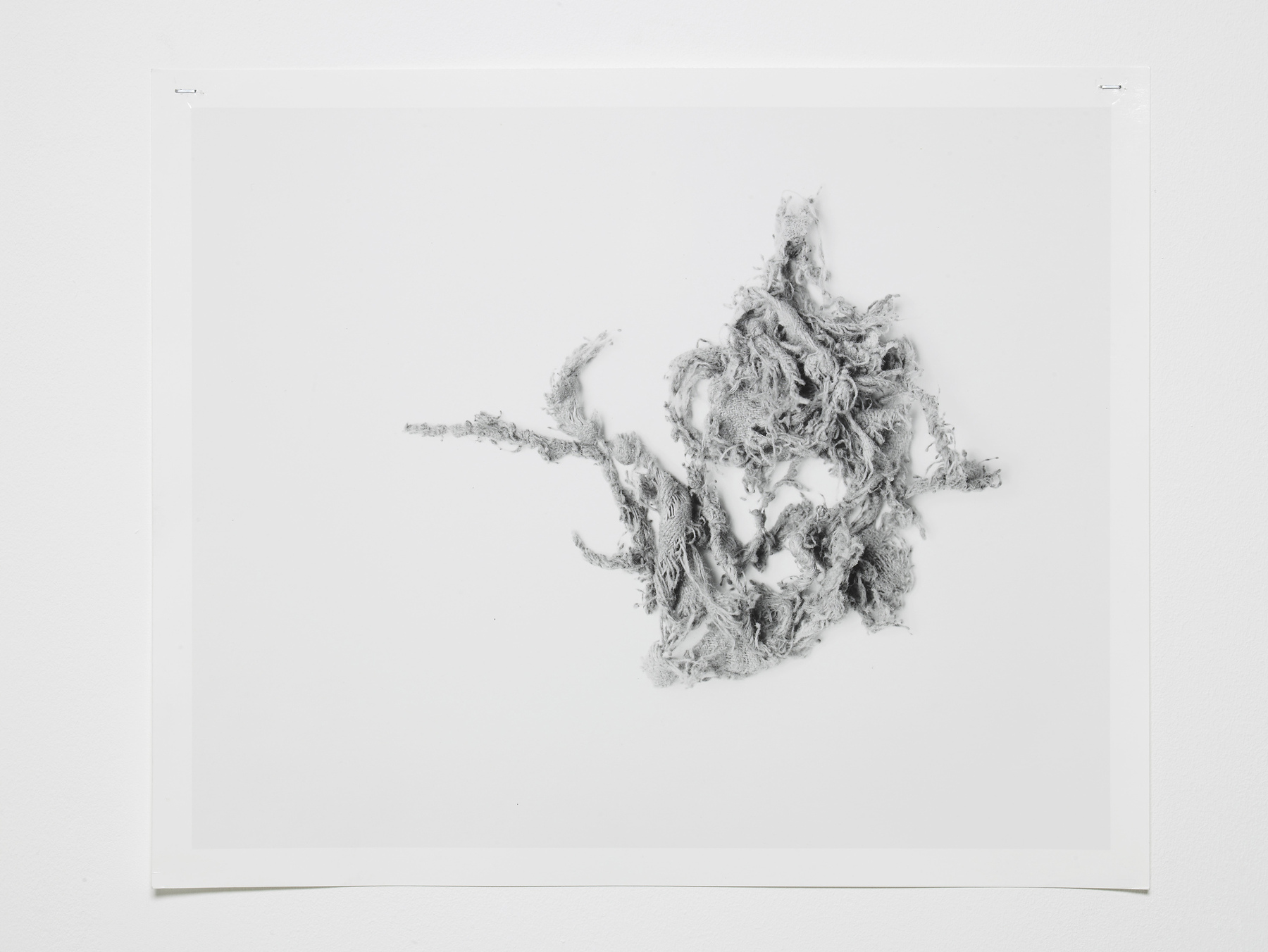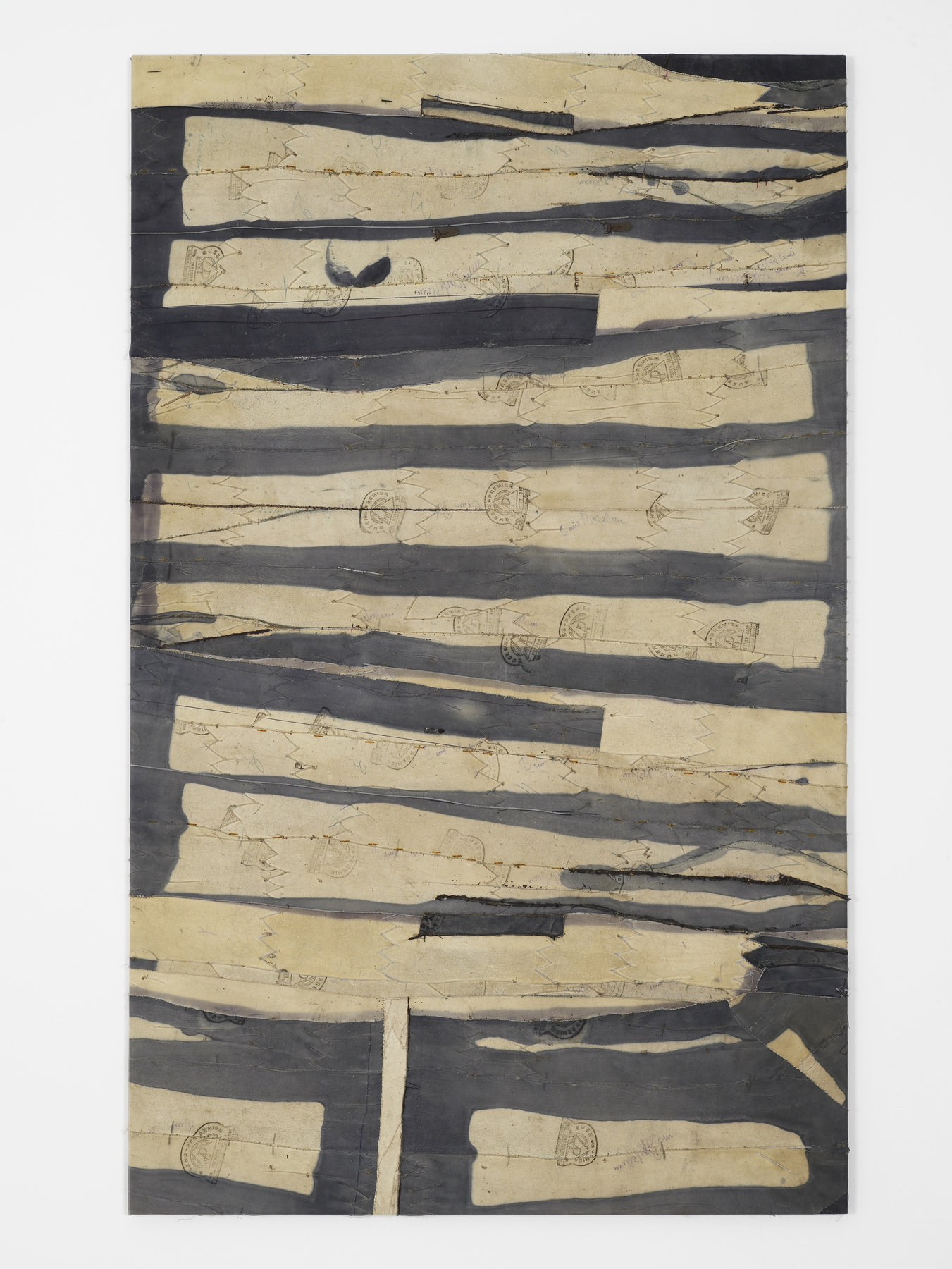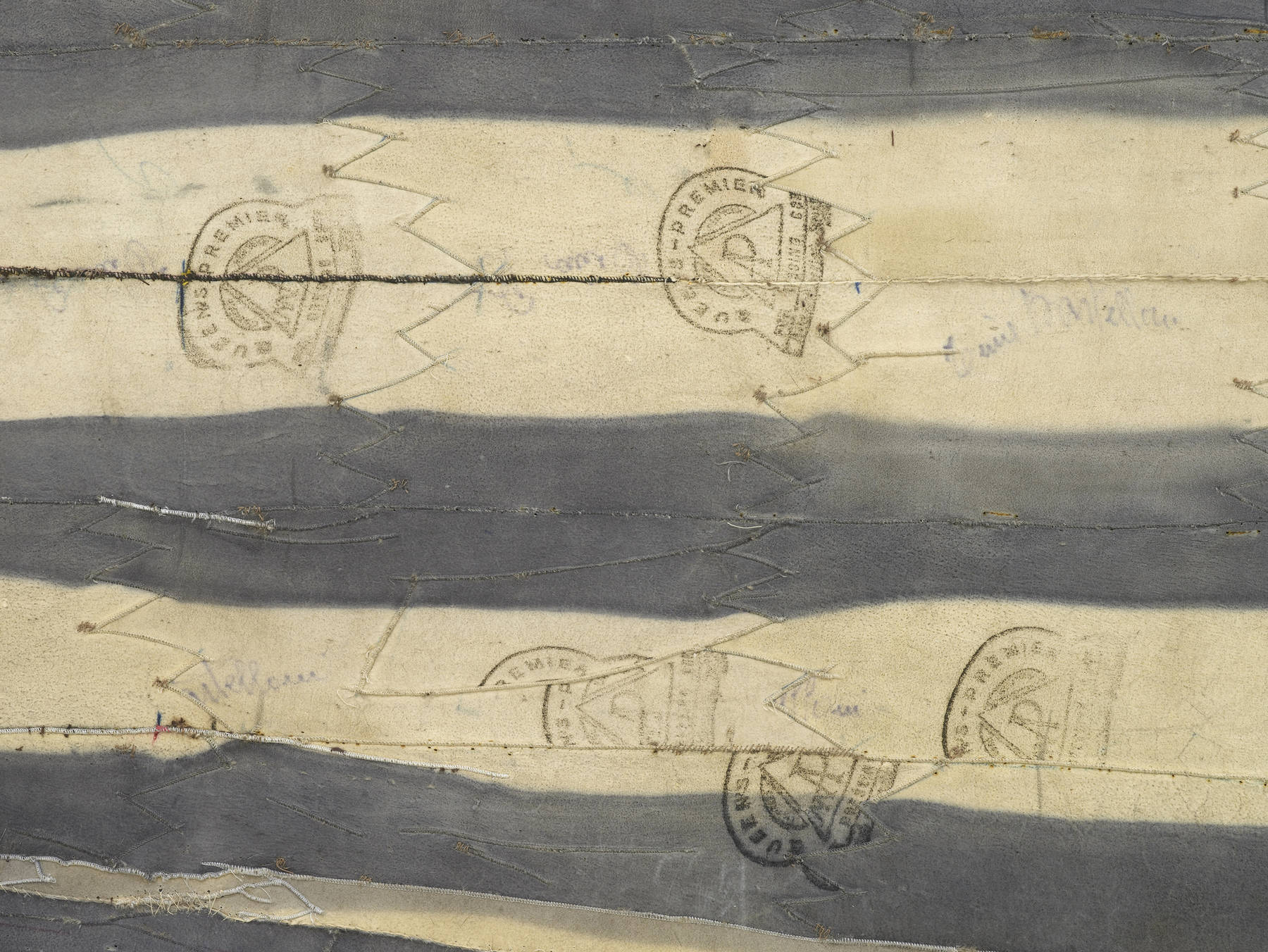Artists: Nina Canell, N. Dash, Simon Fujiwara, Lydia Gifford, Hayley Tompkins and Phillip Zach
Exhibition title: DRAWN BY ITS OWN MEMORY
Venue: Laura Bartlett Gallery, London, UK
Date: November 21, 2015 – January 17, 2015
Photography: images copyright and courtesy of the artists and Laura Bartlett Gallery, London
Drawn by its own memory brings together a group of contemporary artists working in a variety of media whose work evidences an exploration with materials and materiality.
Through processes of their creation, structure, size or relation to the surrounding gallery architecture, the works presented are imbued with a sense of physicality, tactility of surface, the remnant workings of human hands or impressions of the body. For other works included it is an absence of formal logic within the object that is key. Drawing upon the subtlety of fluctuating forces, the minutiae of perception and the innate relationship we have with material, works transfer, exchange and share forms of intuitive knowledge, becoming a filter or conduit through the artists transferal of labour, energy and experience.
Nina Canell considers sculpture as a medium of storage, transmission and reception, often producing a kind of material displacement or exchange. She has a specific interest for the in-between, micro-phenomena, and the imperceptibly palpable. Presented here Free-Space Path Loss, 2014, a simple discretely suspended copper frame illuminates with the remnant iridescent fingerprints of the materials previous encounters, revealed through a process of heat-treating the material. The title, a seemingly contradictory, yet industry used term that describes a tele-communicational equation that, according to Canell “refers to a kind of thinning or dispersal of a signal when traveling in ‘free space’ (such as air).”
Residues of energy, heat and human contact is also the subject of the densely packed, copper wire and rubber insulated telephone cable Brief Syllable (Flat), 2015, an enquiry into the potential that memory can be carried or stored within the materiality of an object. This unearthed subterranean cable, here lies bisected and redundant above ground on an upturned section of carpet. Often unseen, embedded in our walls and city streets, curator Chris Sharp writes of these works; “their invisibility is compounded by a certain unthinkability in a digital, so-called wireless paradigm, as if they were improbable anachronisms. But their actuality is real; they subcutaneously populate our cities like skeins of artificial nerves, permitting one part of the body of a city to communicate with another.”[1]
Presented here is a photograph, a silver gelatin print by N. Dash that depicts an image of one of her constructions, a fabric sculpture made of small swatches of factory-made cotton cloth. The material has been worked through the artist’s daily touch, rubbing and handling; over time the cloth becomes worn, dirty and threadbare. Once she has created a number these pieces, the formless sculptures are assembled in varied configurations and photographed. The material serves as a substitute recording device that documents perceptible information, oils and dirt and manifests the less quantitative, energy, through the artist’s touch.
This physical way of engaging with and navigating through the world is the starting point for Dash’s paintings. The paintings are made with a variety of materials; adobe, oil, graphite, pigment, acrylic, string and linen. The adobe is produced from earth gathered from New Mexico, where the artist first encountered the material. The earth is sifted and reconstituted as a variation on the traditional adobe plaster used in building construction. The two paintings presented here evoke the architectural proportions of constructed structures as well as the vastness of the land, both elements of the material world.
In Simon Fujiwara’s Fabulous Beasts series, post-war fur coats are gathered in Berlin where he lives and works. Initially sourced via online listings, and now acquired from antique dealers, these furs variously evidence the decadence and decline of a city through the revealing of production standards and techniques. In shaving and stretching the animal furs, the archaeology of their production, what was once hidden is revealed, the inked manufacturers quality standard stamps, as seen in Fabulous Beasts (Queens Premier Ocelot), 2015, blemishes and remnants of animal skin disease, the pattern cutters annotations and the complex stitched and seamed coat structure is seen and deconstructed in Fabulous Beasts (Blue Fox Saga), 2015.
In these works, Fujiwara completes the materials narrative from animal skin, to decadent seasonal protection worn by a generation of women, now fallen out of fashion, to passive observed object. Removed from political and social stigma, it is the materials authentic self which is now the focus, and the remaining markings of its former life and history. In their new state, the skins appear both primal and luxurious in an age where a deeper awareness of production and history is fetishised as much as the finished products themselves. Each skin is a token of a defunct idea of wealth; a reminder of the changing nature of taste, value, luxury and society.
Lydia Gifford’s practice is an ongoing investigation into the language and processes of painting. Focusing on its physicality, her work navigates a balance between painting and sculpture, where horizontal and vertical forms appear to emerge autonomously from the manifestation of assembled materials. Gifford’s work offers an experience of interrelated objects, consumed surfaces evidencing textural tension and physical nuances with their surrounding architecture. Privately performative, she works intuitively, guided by the structure of her materials.
Presented here is a large-scale horizontal diptych, Growth, 2015 which appears as a disrupted monochrome, the coloured fabric dye from one internal material used, tainting the outer from within. These various fabrics, saturated with paint and gesso are accumulated on a wooden skeletal structure, choreographed, contorted and fixed with nails, pushing the materials inherent integrity to the limit to a new, reorganised sense of order. Also included is the floor sculpture Vasal, 2015 – a horizontal wooden plank drawn to the ground by a focused mass of concrete saturated cloth, conflating interior with exterior. Half elevated, twisted, and rooted to the gallery floor, this work balances a tension of space and gravity through its structure and surface.
Hayley Tompkins discrete, intimate and deceptively simple assemblages are the result of an intense research and intuitive drive. Her diaristic works encompass ready-made found objects, personal photography as well as images sourced from stock photo catalogues. These materials are countered with a non-traditional painterly practice in which she has painted various objects including hammers, chairs, twigs and knives, to cut up segments of clothing. Generally small in scale, these works are intensely worked upon and require close investigation on behalf of the objects participant.
Playing with the proportion and juxtaposition of her works, presented here are three works Lookalike I, II & III, 2015 in which stock images of cropped in industrial pipes and plastic tubes and saw blades, are fixed with electrical tape within patinated metal trays. These slick, hyper-real technicoloured images have been interrupted with pours of coloured acrylic paint, disrupting the picture plane. Playing with form and colour, in Digital Light Pool, 2015 Tompkins, lets free-flowing paint find its own course within the small opaque plastic tray. An incidental, layered abstract emerges dependent on the paints consistency and movement.
Phillip Zach’s variously coloured and sized segmented tile constellation, Mouse Trap, Lost Posture, Maze Runner and Quibble, 2015 brings to mind the 1984 tile-matching puzzle game Tetris, in which geometrically shaped connecting squares are re-orientated, fall and disappear when a line connection is made, or as dispersed sections of a puzzle or maze removed from the horizontal plane and brought up to the wall like a cartographic navigational schematic. These building blocks, modelled from the cubic segments of a chocolate bar are constructed from a specialised polymeric plaster mixed with diverse materials including coloured inks, annatto seeds, spices – madder root and turmeric, cochineal, silicon, ground coffee and wood melding the organic with the synthetic. For Zach, this gaming motif and the choice and decision in the navigation of a series of laws and codes, and the hacking thereof, within a closed pre-determined system is of interest. Here the work acts as an interlocutor, an abstracted cipher in the deconstruction and calculation of the gallery architecture.
Hayley Tompkins, Lookalike I, 2015
Hayley Tompkins, Lookalike II, 2015
Hayley Tompkins, Lookalike III, 2015
Hayley Tompkins, Digital Light Pool, 2015
Hayley Tompkins, Digital Light Pool, 2015
Lydia Gifford, Growth, 2015
Lydia Gifford, Growth, 2015 (detail)
Lydia Gifford, Vasal, 2015
Lydia Gifford, Vasal, 2015
Nina Canell, Free-Space Path Loss, 2014
Nina Canell, Free-Space Path Loss, 2014
Nina Canell, Free-Space Path Loss, 2014 (detail)
Nina Canell, Brief Syllable (Flat), 2015
Nina Canell, Brief Syllable (Flat), 2015 (detail)
N. Dash, Untitled, 2015
N. Dash, Untitled, 2015 (detail)
N. Dash, Untitled, 2015
N. Dash, Untitled, 2015 (detail)
N. Dash, Untitled (photograph), 2015
Phillip Zach, Mouse Trap, 2015
Phillip Zach, Lost Posture, 2015
Phillip Zach, Maze Runner, 2015
Phillip Zach, Quibble, 2015
Simon Fujiwara, Fabulous Beasts (Blue Fox Saga), 2015
Simon Fujiwara, Fabulous Beasts (Blue Fox Saga), 2015 (detail)
Simon Fujiwara, Fabulous Beasts (Queens Premier Ocelot), 2015
Simon Fujiwara, Fabulous Beasts (Queens Premier Ocelot), 2015 (detail)

